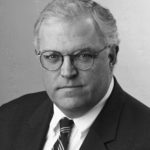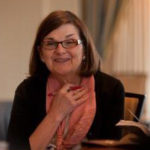By Julie Seward, TFN Inside Policy
TFN recently launched the second installment of Inside Policy, a series of webinars, blog posts and other learning opportunities that allow funders to explore emerging policy trends and their potential impacts on people and communities – as well as the important role philanthropy can play in effectively advocating for and responding to policy changes. Be sure to register for our upcoming Inside Policy funder briefing: Balance of Power: How Courts and States are Impacting Policy, 1 p.m. ET Sept. 24.
For many years, The George Gund Foundation has supported grantees engaged in public policy thought leadership and advocacy. Through this work, Gund grantees have chalked up impressive wins for Northeast Ohio. Bob Jaquay, associate director at the foundation, talks with TFN about why being attentive to the functioning of government is important and how foundations can make a difference to the nonprofits and communities they serve.
Why does federal, state and local policy resonate at the Gund Foundation?

We see public policy advocacy as a very important function of the nonprofits we support. Public policy greatly impacts the very same people nonprofits exist to serve. Consequently, we believe that our foundation should help non-profit leaders to effectively represent the interests of their clients to government.
How did you become involved with public policy?
During my college years, I served on an advisory committee for my hometown’s use of federal Community Development Block Grant funds. I saw first-hand how federal policy was implemented at a local level. Immediately after college, I was a Congressional committee staffer and gained a healthy respect for the legislative process. Shortly after joining the Gund Foundation, I contributed a review of the book A Voice for Nonprofits to Shelterforce magazine. My perspective as a grant maker and foundation lawyer was deeply influenced by that book.
How does Gund carry out its day-to-day policy interests?
Policy advocacy is woven into the work of each of Gund’s program areas – Arts, Community Revitalization & Economic Development, Human Services, Education and Environment. The substance varies by program, but our strategic approach has similarities, too.
I’m most familiar with Community Revitalization & Economic Development. Our foundation has supported research at Brookings and local think tanks and academic institutions that informs advocacy. We provide opportunities for grantees to learn nonprofit rules pertaining to lobbying, advocacy and voter engagement from experts at the Alliance for Justice and Cleveland Votes, the local affiliate of America Votes. We urge our grantees to work together, to formulate a coherent message about how a public policy affects members of our community.
It sounds like partnerships are one key to policy success. How do you team with community and philanthropic partners to accomplish policy goals?
Gund thinks carefully about finding partners and building coalitions that care about common policy issues. Many of these coalitions seek high-profile leaders from the business community. Other coalitions are intentionally built with people from across the political spectrum.
As I mentioned earlier, our foundation has partnered with numerous think tanks and academic institutions that conduct research. We frequently participate with other funders through national affinity groups. Our regional association, Philanthropy Ohio, also has been important to advancing a philanthropic perspective on state-wide policy issues, particularly in the areas of education, healthcare and early childhood programs.
If others are interested in further thinking about the roles of nonprofits in policy, what is a starting point for learning?
I suggest checking out the Bolder Advocacy pages produced by the Alliance for Justice. The sections on ‘Navigating the Rules’ and ‘Focus on Foundations’ are excellent places to start.
More on Gund
This summer, The George Gund Foundation extended its commitment to state and local voter advocacy through grants to these organizations, with a goal of increasing participation of historically underrepresented populations, encouraging racial and economic fairness in voter registration and helping all citizens participate in a healthy political system.
- The Ohio Organizing Collaborative, a coalition of more than 20 groups working for social, racial and economic justice through voter registration, criminal justice reform, and student organizing and leadership.
- Ohio Voice, a statewide nonprofit coalition working to increase the collective influence of its members and constituencies through coordinated, nonpartisan civic engagement, especially for historically marginalized populations.
- Northeast Ohio Voter Advocates, Inc., a volunteer-led voter registration, research and advocacy organization serving the needs of underrepresented citizens and students in the Cleveland area.
Gund’s annual report chronicles the role of the arts in public discourse and community expression. Read the full report here.
About the Author
 Julia Seward is currently leading TFN’s Inside Policy efforts, a series of webinars, blogs and learning opportunities that explore emerging policy trends and their potential impacts on people and communities.
Julia Seward is currently leading TFN’s Inside Policy efforts, a series of webinars, blogs and learning opportunities that explore emerging policy trends and their potential impacts on people and communities.
